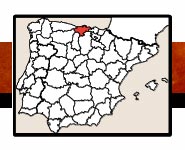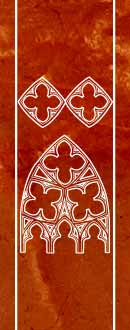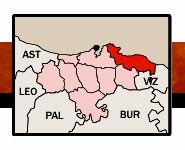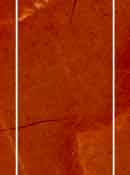 |
|
/SEM-20-sen-lib-E-25.jpg)
CUEVA DE COVALANAS – RAMALES
Es una cueva pequeña con 2 galerías, con un abrigo al exterior, Además de ciervas se han identificado otros animales, como el caballo y el uro. Conocida como la “cueva de las ciervas rojas”, fue descubierta por el padre Lorenzo Sierra en (1903). Tienen una cronología de unos 20.000 años a.C.
ACCESO : Entre Bilbao y Santander a la altura de Colindres en la N-634, arranca la carretera que conduce a Ramales, la N-629. Desde Ramales de la Victoria, hay que coger la N-629 en dirección Burgos, a unos 2 Km., en el (PK 188), a la izquierda se encuentra el desvío que lleva a la cueva. Algunos puntos muy estrechos impiden el acceso a las cuevas, siendo la anchura de la silla el principal handicap.
VISITA : Como ocurre en las demás cuevas de Cantabria, es preciso realizar reserva anticipada de entradas y pedir una hora, entre las que propongan: o al Tlf. 942.59.84.25. La entrada general son 3 € y la reducida 1,50 €. A lo largo del año cierra lunes y martes, excepto en verano, que solo cierra el lunes. |
|
/300-CAN-Ram-Cov-40.jpg) |
|
/SEM-20-sen-lib-I-25.jpg)
COVALANAS CAVE - RAMALES
It is a small cave with 2 galleries, with a shelter to the outside; in addition to hinds other animals have been identified, like the horse and the uro. Known as the “cave of the red hinds”, it was discovered by father Lorenzo Sierra in (1903). The cave have a chronology of around 20,000 years BC.
ACCESS: Between Bilbao and Santander, at the town of Colindres on the N-634, start the road for Ramales the N-629. From Ramales de la Victoria you have to take the N-629 towards Burgos, around 2 Km away, at (PK 188), on the left you will find the detour that leads to the cave. Narrow points prevents access to the caves, with the width of the chair being the main handicap.
VISIT: As it happens in other caves of Cantabria, it is necessary to make advance reservations of tickets and ask for an hour, among those that propose: or to the Tlf: 942.59.84.25. The general admission is €3 and the reduced € 1.50. Throughout the year it closes Monday and Tuesday, except in summer, which only closes on Monday. |
|







(40)/BE-C/CANT-CasUrd-40.jpg)
-55/BOOK-cort-40.jpg)





/compl-canta/CAN-ASOAG-W-50.jpg)
/compl-canta/TT-CAN-AsoAgu-W-40.jpg)